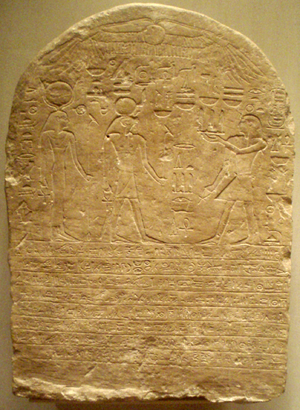نبت حتپت
(تم التحويل من Nebethetepet)
| ||||||
| Nebet-hetepet بالهيروغليفية |
|---|
|
جزء من سلسلة مقالات عن |

|
|
المعتقدات الرئيسية
وثنية • وحدة الوجود • تعدد الآلهة |
| الشعائر |
| صيغة التقديم • الجنائز • المعابد |
| الآلهة |
| أمون • أمونت • أنوبيس • أنوكت أپپ • أپيس • آتن • أتوم باستت • بات • بس أبناء حورس الأربعة گب • هاپي • حتحور • حقت حورس • إيزيس • خپري • خنوم خونسو • كوك • معحص • ماعت معفدت • منحيت • مرت سگر مسخنت • مونتو • مين • مر-ور موت • نون • نيت • نخبت نفتيس • نوت • اوزيريس • پاخت پتاح • رع • رع-حوراختي • رشپ ساتيس • سخمت • سكر • سركت سوبك • سوپدو • ست • سشات • شو تاورت • تفنوت • تحوت واجت • واج-ور • وپواوت • وسرت |
| النـصـوص |
| عمدوعت • كتاب التنفس كتاب المغارات • كتاب الموتى كتاب الأرض • كتاب الأبواب كتاب العالم السفلي |
| غيرهم |
| الآتونية • لعنة الفراعنة |
نبت-حتپت ( Nebet-hetepet ؛ nb.t-ḥtp.t) هي إلهة مصرية. Her name means "Lady of the Offerings" or "Satisfied Lady". She was worshipped in Heliopolis as a female counterpart of Atum. She personified Atum's hand, the female principle of creation, and could also be a title for Hathor, but aside from that had little significance.[1]

A stela depicting a pharaoh Osorkon I making offerings to Re-Horakhty and Nebet-Hetepet (circa 924–889 B.C.)
المراجع
- ^ Richard Wilkinson: The Complete Gods and Goddesses of Ancient Egypt. London, Thames and Hudson, 2003. ISBN 978-0-500-05120-7, p.156
This article may include material from Wikimedia licensed under CC BY-SA 4.0. Please comply with the license terms.